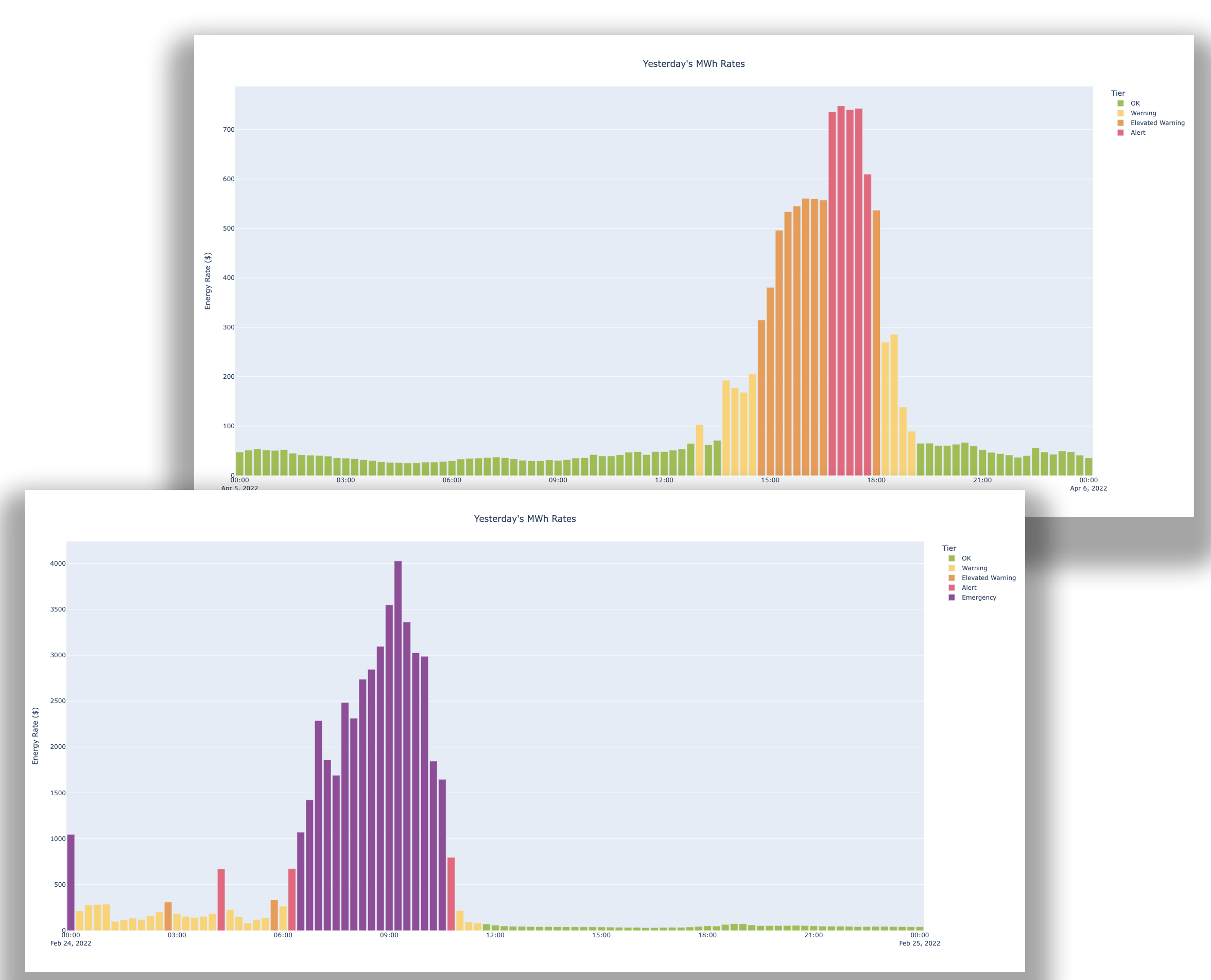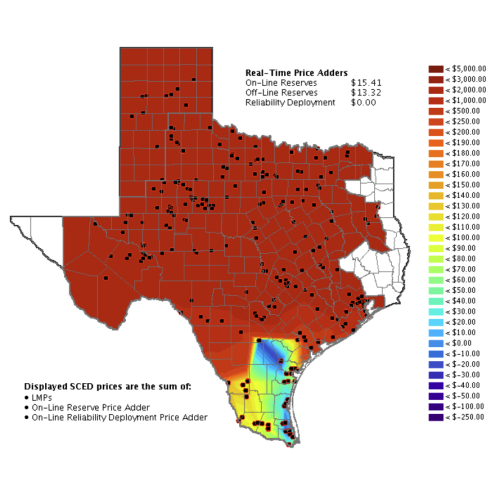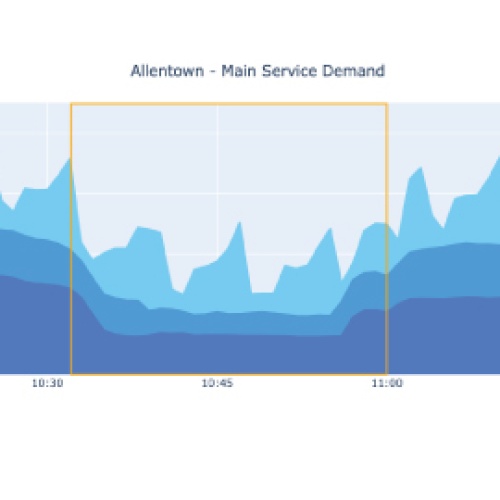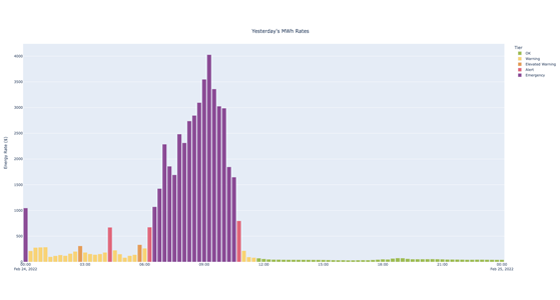
Load Control
Load Management Solutions
Manage your risk of energy price spikes
Electricity prices can spike more than 10,000% during peak times. Are you managing your risk? If not, industrial customers can be hit with massive charges. Let our energy experts guide you through your bill and present intelligent load management options. We offer a holistic approach that lets you start where you want and offload as much of the complexity as you’d like. We can even integrate with legacy control systems to automate your load control.


Load Control

Load Management Solutions
Manage your risk of energy price spikes
Electricity prices can spike more than 10,000% during peak times. Are you managing your risk? If not, industrial customers can be hit with massive charges. Let our energy experts guide you through your bill and present intelligent load management options. We offer a holistic approach that lets you start where you want and offload as much of the complexity as you’d like. We can even integrate with legacy control systems to automate your load control.
Why Load Management?
Price Spikes: Mitigate your risk from sudden electricity price spikes by predicting peak periods, automatically adjusting energy usage, through load-shedding, to avoid costly price surges.
Demand Charges: By monitoring consumption in real-time, our demand management system optimizes energy usage patterns to reduce peak demand and lower your exposure to high demand charges.
Coincident Peak / 4CP Charges: Forecast potential Coincident Peak events and automatically curtail energy use during those hours, reducing your liability to programs like 4CP and 5CP, lowering overall demand charges significantly.
Demand Response & Peak Shaving: Automate load shedding and demand response to reduce consumption during peak periods and earn incentives, thereby minimizing the financial risk of high energy costs.
Power Factor: Monitor and correct power factor distortions, which can impact demand charges in facilities with large motors or other induction loads.
In addition to the amount of energy used, industrial facilities may need to consider the below variables when implementing load control systems:


Houston Tire Recycler Dodges Energy Inflation
Genan saves $100k+ in less than 4 months by automating their response to electricity prices.

Hot Texas Summer
You already know Texas electricity prices can spike dramatically. Are you ready for a record-breaking summer?

Automated Demand Response Case Study
Learn how one facility gets paid to provide load flexibility to the grid, with just a simple text message approval.

Avoid price spikes
- Know when price spikes are coming*
- Understand when it makes sense to curtail
- Automate various load shedding scenarios
*For day-ahead and real-time electric customers

Avoid coincident peak (4CP) and demand charges
- Understand how demand charges impact your bill
- Predict Coincident Peak periods
- Automate peak shaving and Coincident Peak / 4CP load shedding
Demand charges range from 30-70% of a typical industrial energy bill!

Automate demand response
- Understand which DR programs make sense for your operations
- Simplify DR calls from multiple aggregators across your portfolio
- Automate curtailment scenarios and shutdown sequences and ramping periods
Turn your facility into a giant battery – and get paid!
Industries Benefiting from Load Management Solutions
- Manufacturing: Energy-intensive operations in manufacturing plants are optimized with load control solutions to reduce peak demand and lower overall energy costs.
- Food Processing: High energy usage for refrigeration and processing in food plants can be streamlined through demand response strategies to avoid costly consumption during peak hours.
- Cold Storage and Warehousing: Facilities that require constant temperature regulation can mitigate energy spikes by using software that adjusts consumption during Coincident Peak periods.
- Distribution and Logistics Centers: Large-scale distribution centers benefit from automated demand management that aligns energy use with operational needs while avoiding demand charge penalties.
- Oil and Gas: Oil and gas operations are increasingly electrifying, and many are in electricity markets with Coincident Peak programs, such as ERCOT 4CP and PJM 5CP, which can result in major demand charges if not managed.
- Chemical and Petrochemical: Continuous processes in chemical plants rely on real-time energy management to prevent costly interruptions and reduce exposure to demand charges.
- Retail Chains: Multi-site retail operations use demand management to track and optimize energy use across locations, especially during periods of high demand or price surges.
- Pharmaceuticals: Energy-intensive processes like climate control and manufacturing in the pharmaceutical sector can reduce costs and improve sustainability through energy demand management systems.
- Hospitality: Hotels and resorts can use these solutions to manage peak load by adjusting heating, cooling, and lighting systems without compromising guest comfort.
- Utilities: Energy providers use demand response solutions to manage grid stability, offering incentives to large users for reducing consumption during peak demand times.
Demand charges range from 30-70% of a typical industrial energy bill! Any industry can benefit from knowing when price spikes are coming.

